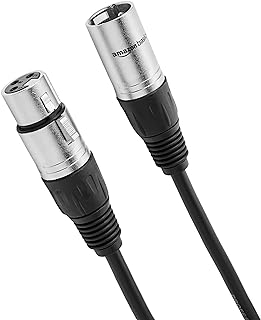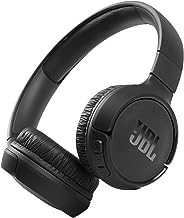5 important factors worth considering when looking for the best xlr cable
When you’re looking to invest in good sound equipment, choosing the right XLR cable is really important. A high-quality XLR cable is essential for clear and accurate audio transmission between different devices. There are a lot of different options for XLR cables, each with their own special features. In this article, we’ll talk about the important things to consider when choosing an XLR cable, so you can be sure you’re getting the best audio quality and durability for your money.
See our guide to the best xlr cable.
Cable length
When buying XLR cables, the length is important to think about. Some think longer cables give more flexibility, but I believe it’s best to get the shortest length you need. Long cables can make the signal worse, causing unwanted noise and lower sound quality. They can also make your setup look messy and unprofessional. By getting the right length, you’ll have a cleaner signal and a neater workspace.
Choosing the right length can also save you money. Long cables cost more upfront and wear out faster. Shorter cables are cheaper and easier to handle and store. By focusing on efficiency and quality, rather than just length, you can improve your audio setup and have a professional recording or performance. Remember, sometimes less is more when it comes to XLR cables.
Cable construction/material
When you’re buying an XLR cable, it’s important to consider the construction and materials used. These factors can have a big impact on how well the cable works and how long it will last. Choosing a cable made with high-quality materials like oxygen-free copper and strong shielding will help ensure that the signal is transmitted clearly and without interference. While a well-made XLR cable might cost a bit more, the improved audio quality and reliability make it a good choice for anyone who cares about sound.
In the world of audio, the saying “you get what you pay for” is especially true for XLR cables. It might be tempting to go for a cheaper option, but these cables are often lower quality and less durable, which can lead to audio problems in the future. By focusing on the construction and materials of an XLR cable when making a purchase, you can be confident that you’re getting a product that will meet your needs and last a long time, providing great sound quality for years to come.
Connector type
When buying an XLR cable, it’s important to think about the type of connector you need. Male connectors are more versatile and widely used in the industry, making it easier to find compatible equipment. They also provide a strong connection that reduces signal loss. Female connectors are necessary for connecting certain devices like microphones and speakers. Having a mix of both types of connectors can give you more options for connecting different audio equipment. By choosing the right connectors for your XLR cables, you can create a reliable setup that meets your needs for professional or personal audio projects.
Shielding
When buying XLR cables, one important thing to consider is shielding. Shielding helps reduce interference in your audio signals. It’s crucial in places with lots of electronic devices. High-quality shielding can make a big difference in how your audio equipment performs.
There are many XLR cables to choose from, but don’t be swayed by marketing or low prices. Poorly shielded cables can cause signal problems like noise or loss. It’s important to choose cables with good shielding to protect your audio setup. Don’t risk compromising your sound quality by ignoring the importance of good shielding in XLR cables. Invest in cables that prioritize signal transmission quality.
Price
When choosing XLR cables, it’s important to balance quality and price. While it’s tempting to go for the cheapest option, this can lead to poor sound and durability. Spending a bit more on better XLR cables may seem like a lot at first, but the long-term benefits are worth it. Higher-priced cables are usually better built, shielded from interference, and have better conductivity, which improves the sound overall. In the world of audio equipment, you usually get what you pay for, so investing more in quality XLR cables can greatly improve your audio experience and be a good investment.
It’s crucial to set a budget for XLR cables that fits your audio needs. Instead of just looking at the price, think about the performance and durability that come with higher-priced cables. By prioritizing quality over affordability, you can create a better audio setup with clear sound and long-lasting cables. Remember, quality craftsmanship often comes with a higher price, but investing in premium XLR cables will pay off with great sound and reliability.
Conclusion
The XLR cable is crucial for high-quality audio. It’s known for its strong connection and ability to reduce interference, making it essential for professional sound systems. Whether you’re in a studio, at a live show, or watching a movie at home, the XLR cable is unbeatable for clear sound. It’s not just a cable – it brings music and voices to life, enhancing our listening experience and connecting us to the true power of sound. Want more info on nipple toy for baby, check the best nipple toy for baby.

